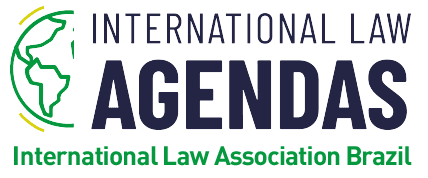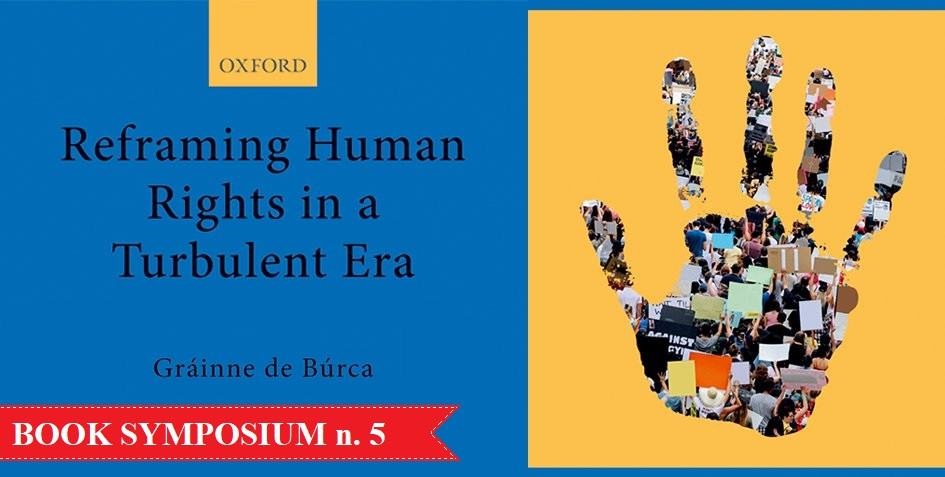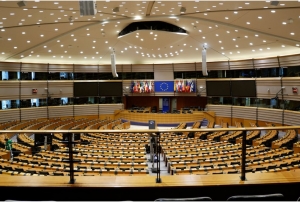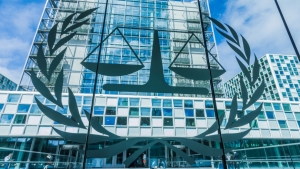Challenges of a vibrant, dynamic and complex theory for human rights
Portuguese version here.
Human rights operate at the crossroads: law and politics; social movements and institutions; domestic and international plans; conservation and transformation. These intersections are permeated by tensions that pervade both theoretical reflection and practice.
Against this background, there is a question that has been asked on numerous occasions by activists, litigants, and academics: can the law, and more specifically human rights, contribute to altering existing power relations, hierarchies, and social inequalities, or, on the contrary, will it always reinforce and produce them? If so, how?
In her new book, Reframing Human Rights in a Turbulent Era, Gráinne de Búrca offers an answer from international human rights law perspective that rejects both a “deeply critical [approach] as to the past effectiveness of the [human rights] project and deeply pessimistic as to its future”, as well as one that overlooks “aspects of the depiction of human rights as bureaucratic, elitist, top-down, and imperialistic” (p. 10).
The book’s analysis focuses on the multilevel interactions that occur among domestic and international actors over time and on the fact that, despite their shortcomings, human rights have been able to contribute to the advancement of “social importance and political change across many parts of the world” (p. 10).
In short, it proposes an approach to human rights that is “interactive (premised on the engagement of social movements, civil society actors, and international norms and institutions), iterative (dependent on ongoing actions) and long-term (pursuing the kindsof social and fundamental changes that are rarely achieved)” (p. 10). The work emphasizes the importance of “learning from the local or contextualized experiences in the common framework” (p. 41) while rejecting the assertion that human rights will necessarily be positive or have their intended social impact (p. 12).
This theoretical proposal presents a relevant normative contribution regarding the desirability of human rights – to be conceived from a contextualized and contingent approach. From this dynamic and intricate approach, it is possible to reflect on the valueof human rights not due to their transcendence, but as a useful instrument that can be strategically mobilized in a given reality, together with other tools in long-term mobilization and articulation processes.
In doing so, it adds a new layer of complexity to the theory and practice of human rights.
In addition to its normative value, the work offers useful lenses to observe and reframe how, in practice, successful campaigns for political and social change are being operationalized in order to understand in which ways and under what circumstances human rights can be more or less effective.
In this sense, the book includes three case studies that aim to illustrate how “a particularly effective model of human rights promotion which can be observed from campaigns in many parts of the world is one that combines robust domestic mobilization with external accountability and independent internal support in an ongoing process of change over time” (p. 24). To this end, the author examines use made in Pakistan of the Convention on the Elimination of All Forms of Discrimination against Women (CEDAW), reforms of disability policy in Argentina, and domestic advocacy and action around the Convention on the Rights of the Child (CRC) and the reform of abortion law both in Ireland.
Albeit presenting interesting descriptions and a vast repertoire of human rights centered actions and tactics, the case studies are a first step in illustrating the theory, that do not exhaust all its possibilities nor fully reflect its complexity. More than providing answers, the cases allow for raising new and thought-provoking questions.
How, in these scenarios, did any changes in government influence the receptivity of a State to human rights? To what extent does the signature or ratification of a treaty, or the participation of States with periodic reports, displays a predisposition to human rights that would be more a cause of the adoption of certain measures than its consequence? How did countermovements operate, and how were “setbacks and disappointments” incorporated into the rhetoric, narrative, and strategy of different organizations, independent and state bodies? To what extent are countries influenced by changes in the domestic law of other States compared to human rights? All these are relevant aspects to understand what an effective model of human rights promotion would be.
Despite the book’s concern with the interaction between civil society, independent and international bodies, the focus of the case studies’ analysis ends up turning to the United Nations sphere, where the arguments mobilized are documented and discussed in detail. In addition, the emphasis on the rights of specific groups does not allow us to measure the degree of influence of domestic elements in the processes at stake, such asthe general situation of human rights in these countries, political contingencies, including ideological inclinations of the governments in power, and internal legal changes such as, for example, composition of courts and jurisprudential shifts.
In this regard, the case studies allow us to envision potential developments of the research that include a comparison with cases in which a successful trajectory was not verified, whether in other countries or by other movements and struggles in those samecountries. And possibilities that encompass a detailed examination of arguments and documents related to domestic reforms, media campaigns, parliamentary lobbying, among others, including to verify if and to what extent international human rights instruments are referenced.
Another aspect that may, within the scope of this research agenda, allow an expansion of the conclusions reached in the book would be a deepening of tensions and contradictions within the participating NGOs, groups and movements themselves, and their consequences: To what extent has the increase in the number of shadow reports submitted indicated an intensification of civil society activity or a shift in focus from other fields such as domestic litigation advocacy to the international sphere? What incentives and obstacles contribute to this eventual shift? How does the collaboration between grass-roots movements with NGOs take place in the international spheres, what bargains permeate this relationship? Could another dynamic of these interactions allow us to think of alternative results that could be even more transforming? These are key elements to develop a complex and contextualized understanding of long-term human rights development processes across countries.
If it is true that human rights played a relevant role in these social and political transformation processes by engaging and galvanizing, as explored in the case studies, adeepening of these elements by addressing the questions abovementioned, accompanied by a methodological thickening that justifies the choices of themes and countries, would allow the exam and comparison of when, how and to what degree this influence occurred. Additionally, it would allow for ruling out any accusation in the sensethat stories can always be told in a way that fits and proves a previous theoretical framework.
By proposing a vibrant, dynamic and complex theory to observe the development of human rights in different countries and to evaluate their potential in the current era, thebook poses a challenge: operationalizing analysis of intricate, contextualized, and evolving case studies. Although the book’s case studies do not exhaust the elements of this deep and encompassing approach, further developments seem to be on the horizon of a “dynamic, diverse and evolving” (p. 223) experimentalist account to human rights, as the one presented in “Reframing Human Rights in a Turbulent Era”.
Book symposium – A reaction from Gráinne de Búrca
-

Professora Adjunta de Direitos Humanos da UFMG e Coordenadora da Clínica de Direitos Humanos da UFMG. É doutora e mestre em Direito Público pela UERJ e LL.M. pela Yale Law School





